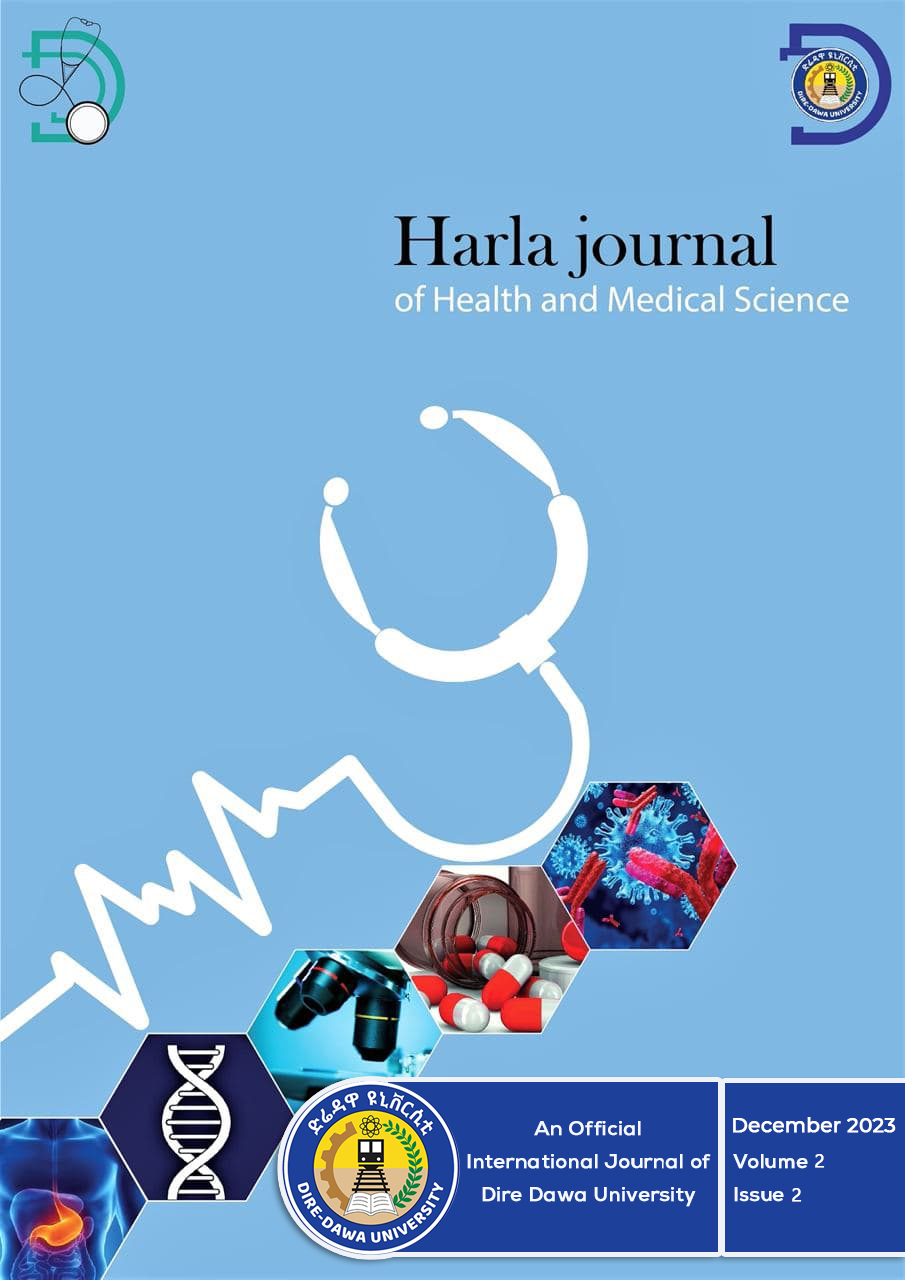Addressing Under-Nutrition Among Pregnant Mothers in Dire Dawa City, Eastern Ethiopia:
Overlooked Public Health Issue
DOI:
https://doi.org/10.20372/hjhms.v2i2.169Keywords:
Dire Dawa, Ethiopia, Mothers, Pregnancy, UnderweightAbstract
Introduction: Undernutrition during pregnancy poses significant risks to maternal and fetal health. In Dire Dawa, Ethiopia, socio-economic factors, healthcare access, and nutritional education may influence the nutritional status of pregnant women. It is important as a society to prioritize helping women understand the impact that their lifestyle choices have on their children. This study aimed to assess the prevalence of undernutrition and its associated factors among pregnant mothers in Dire Dawa.
Methods: A community-based cross-sectional study was conducted among pregnant mothers attending healthcare facilities in Dire Dawa from June 26 to July 6, 2023. A total of 387 participants were surveyed by systematic random sampling technique using structured questionnaires. Nutritional status was assessed through anthropometric measurements, and data on family income, educational status, parity, illness history, antenatal care (ANC) visits, and nutritional education were collected. Logistic regression analyses were performed to determine associations between these factors and undernutrition. Variables with significant association was identified on the bases of P value < 0.05 with 95% confidence interval.
Results: The study found that family income was significantly associated with undernutrition; mothers with a family income of less than 10,000 birr were 8.14 times more likely to suffer from undernutrition (AOR = 8.14, 95% CI: 6.15–10.74). Parous mothers had a higher likelihood of undernutrition compared to nulliparous mothers (AOR = 2.32, 95% CI: 0.13–9.53). Additionally, women who did not attend ANC clinics were more likely to be undernourished (AOR = 3.04, 95% CI: 0.83–32.10). Those who experienced illness during pregnancy had a substantially increased risk of undernutrition (AOR = 33.605, 95% CI: 2.858–395.189). Furthermore, respondents lacking nutritional education were more likely to suffer from undernutrition (AOR = 0.56, 95% CI: 0.32–0.97).
Conclusion: The findings indicate that undernutrition among pregnant mothers in Dire Dawa is significantly influenced by family income, parity, ANC visits, illness history, and nutritional education. Targeted interventions addressing these factors are crucial for improving maternal nutrition and health outcomes in the region.
Downloads
Published
How to Cite
Issue
Section
License
Copyright (c) 2023 Harla Journals and Author(s)

This work is licensed under a Creative Commons Attribution-NonCommercial 4.0 International License.






